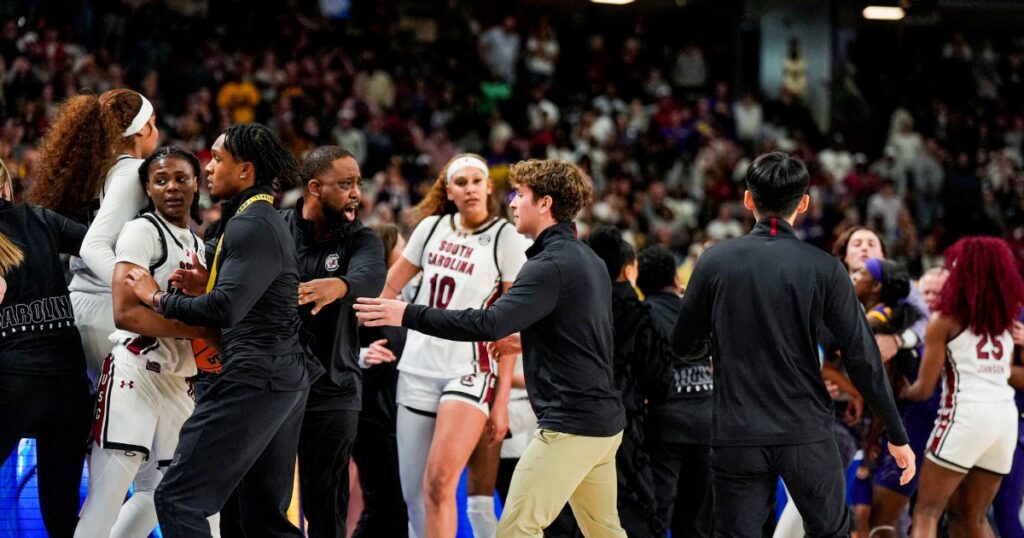In a scuffle near the end of Sunday’s Southeastern Conference women’s basketball championship in Greenville, South Carolina, Kamilla Cardoso, South Carolina’s 6-foot-7-inch center, pushed down Flau’jae Johnson, LSU’s 5-foot-10-inch guard. That prompted 24-year-old Trayron Milton, Johnson’s brother, to jump over the scorer’s table and onto the court, where he briefly made contact with Cardoso.
Milton seemed to size up the much taller Cardoso, realize he had made a terrible mistake and backed off. But what if he hadn’t?
Milton seemed to size up the much taller Cardoso, realize he had made a terrible mistake and backed off. But what if he hadn’t? Officials say Milton pushed down an SEC employee and stepped on that person’s shoulders to make it to the court. Greenville police booked Milton with assault and battery and disorderly conduct, two misdemeanors. He was released from jail Monday after posting bail. Police say two other people made it out of the stands and to the scorer’s table, but were prevented from running onto the floor.
It may sound alarmist, but it would also be naïve for us to not think about former tennis great Monica Seles, whose career was derailed in 1993 when a fan in Hamburg, Germany stabbed her in the back as she set in the changeover chair between games. When someone who shouldn’t be there runs onto a court, there’s no way of knowing who has ill intentions.
The same goes for jubilant fans who storm the court after a big, sometimes unexpected, victory. Both situations put players at risk.
This season alone, we have seen fans rushing the court result in a near injury for Iowa’s Caitlin Clark — the most watched and most valuable player in all of college basketball — and in a knee injury for Duke center Kyle Filipowski, after Wake Forest fans stormed the court following their upset victory over the Blue Devils. But that’s child’s play compared to what could happen: a severe injury, an assault or an accident that…
Read the full article here





